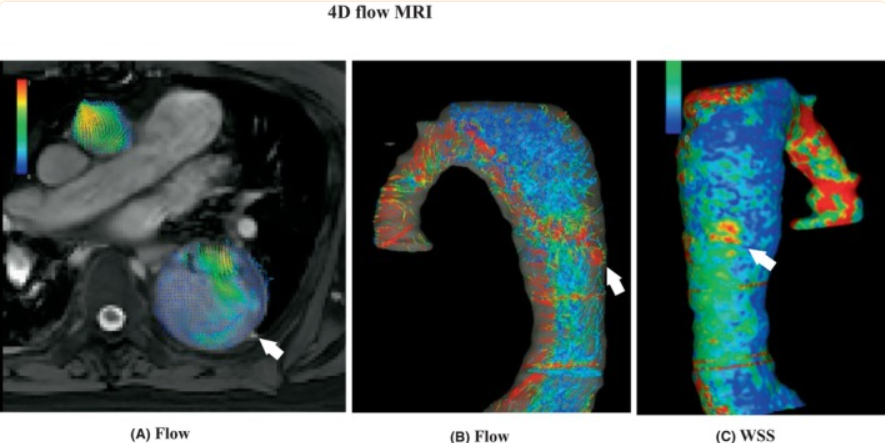Evaluation of flow dynamics in distal stent graft‐induced new entry using 4D flow MRI
A clinical case report on the evaluation of intraluminal blood flow with 4D Flow MRI to establish treatment strategies for Aortic Dissection by Dr. Kenji Sakakibara et al at the University of Yamanashi.
In chronic persistent aortic dissection, insertion of stent grafts and the Frozen Elephant Trunk (FET) technique are utilized to close the entry. However, with increasing cases, a complication called distal stent graft-induced new entry (dSINE) is observed, where a new entry is formed at the distal end of the stent graft.
The circumstances under which dSINE leads to further expansion of the false lumen remain unclear. 4D Flow MRI was employed for intraluminal blood flow assessment, aiding in establishing treatment strategies for this case.
Results of the investigation suggest that 4D Flow MRI offers prognostic predictions, visualization of accelerated blood flow, and identification of regions with high wall shear stress (WSS), hinting at further enlargement of the false lumen.
Reference
Kenji Sakakibara, Hiroyuki Nakajima, Yudai Hagihara, Chie Nakamura, Daichi Shikata, Yuki Takesue, Satoru Shiraiwa, Yoshihiro Honda, Shigeaki Kaga, Masahiro Hamasaki, and Hisashi Johno, "Evaluation of flow dynamics in distal stent graft‐induced new entry using 4D flow MRI", National Library of Medicine Clinical Case Reports, Published Online 2024 Apr 4 (2024) doi: 10.1002/ccr3.8739.
Go To the Journal Page
